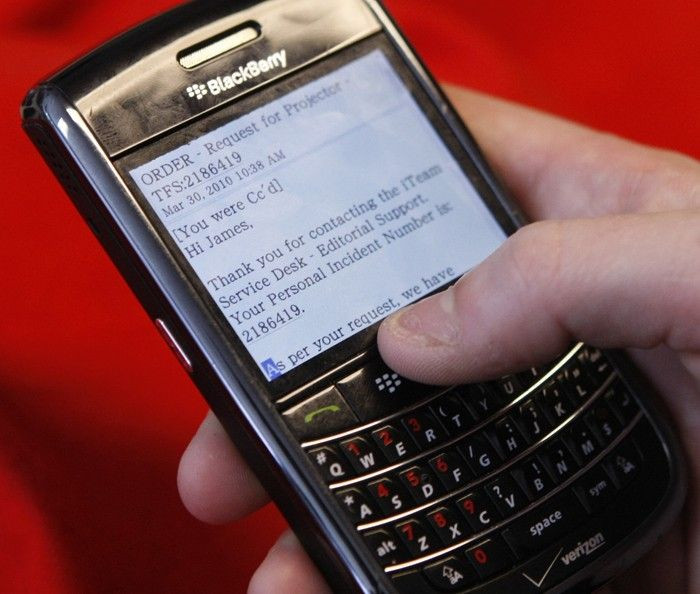Modern Etiquette: E-mail etiquette at work and home

Businesses live and breathe by email. It's no longer uncommon to work regularly with people you've never met, with the interactions carried out entirely through calls and email.
Whether you think this is good or bad, it's here to stay, and how you compose an email speaks to your professionalism, reliability, and image, and it represents, by extension, your company or place of work.
Formality.
Formality used to be a given in business correspondence, but no longer. Follow the same pattern in an email that you would face-to-face if your new client has been introduced to you as Brian, or if that is what the rest of the team calls him, you don't need to revert to Mr. Carson in a follow-up email. But the reverse also applies: until asked to call him Brian, stick with Mr. Carson. When in doubt, defer to the formal: use Mr. for men, Ms. for women. It's far easier to respond to, Oh, call me Kara, than, Actually, it's Ms. Pomerantz.
Hello and Goodbye.
Most emails are only a few lines at most, but the recipient is still worth a salutation and closing: Dear remains both standard and formal, Hello is professional and friendly, Hi is casual and conversational. Avoid Hey; it may sound jaunty to some, but to others it can read as a verbal jab. There are a multitude of options for closings. When in doubt Sincerely or Regards are both safe bets. Other variations on this theme include, Best regards, Kind regards, Best wishes, Sincere regards, Thank you, and Many thanks, to name just a few. More casually are, Take care and Talk soon.
When an email chain deepens, it's fine to drop greetings, as the tone is now a back-and-forth conversation.
Tricks of the Trade.
To smiley or not to smiley, that is the question. Unless you are absolutely certain an emoticon will be received well, avoid using them. To unsympathetic eyes, or simply to someone who doesn't know you well, they look juvenile in business. The same applies to the use of abbreviations, such as ttyl (talk to you later) and lmk (let me know). Shorthand isn't wrong; but it only serves you and your professionalism well if received well (or at least with notice), so consider your audience first. The use of all caps always denotes shouting, so unless you are shouting congratulations, get calm and pick up the phone or visit a colleague to discuss differences of opinion.
Signing Off.
Signature blocks can be helpful, especially when they contain the basic alternate means of contact: mailing address, telephone, mobile or fax numbers, and perhaps a website. Signature blocks run the risk of becoming weighty anchors at the bottom of a message when they include too many promotional links, websites, or social networking invitations. Keep inspiration quotes for personal email accounts.
Second Thoughts.
Quickly typed and sent in the blink of a nanosecond, it's understandable why emails can be rife with typos, from the commonplace to the funny to the mortifying. An advertisement aired during last month's Super Bowl that played on the panic of an employee who thought he had sent an inappropriate message to his whole company. Clearly, it would be best to do a read-through before sending, and not to rely too heavily on the spelling and grammar check features, as they can let you down in crucial moments. The attention paid to drafting a message says something beyond the words on the screen. It speaks to your professional image and your attention to detail.
Why Highlight a Negative?
A preset message stating, Sent from my iPhone/BlackBerry, etc. is fine to use. But refrain from prefacing it with the recent variation, Please excuse any mistakes in this message. It was sent from my iPhone/BlackBerry, etc. The very fact these devices are mobile means messages are often typed while we're on the dash, and small keyboards and anticipated text features, which can turn a run-of-the-mill email into a game of Madlibs, don't help. Still, why draw attention to the fact you didn't think the recipient was worth rereading the message for? Worse, if there weren't any mistakes, you've now implied that often there are -- and that you're not responsible for them, when in fact you are.
Going Offline.
Lastly, there comes a time in every inbox when reply or forward won't suffice. If a conversation is going downhill fast, pick up the phone or set an in-person meeting. Research has shown we default to a negative interpretation of others' words when we don't have their tone of voice or body language to make their meaning clear.
Used well, email is a tremendous time-saver. But some things are worth spending time on. Handwritten thank you notes are still a must for gifts, big meals, and important opportunities or favors, and show you spent time reflecting on their value to you. That's a message worth sending.
© Copyright Thomson Reuters 2024. All rights reserved.





















